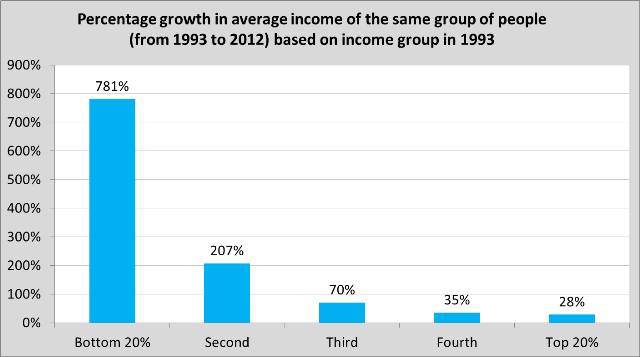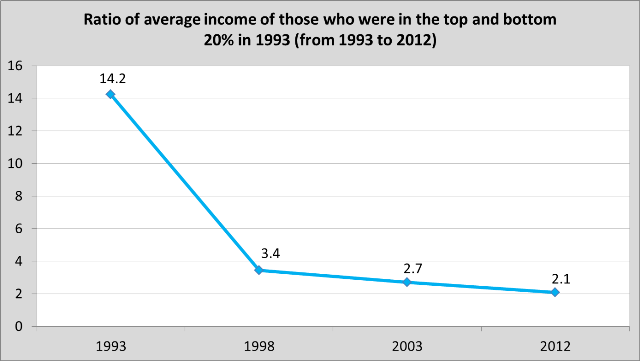Low-income Canadians have enjoyed dramatic income gains
Here’s something you don’t often hear in the media. Canadians across the income distribution, especially those with initially low income, have enjoyed dramatic income gains over the past two decades.
So finds our recent study that used Statistics Canada data to measure how the incomes of nearly one million Canadians changed from 1993 to 2012.
The study first divided Canadians into five income groups (from lowest to highest) based on what they earned through wages and salaries in 1993, with each group comprising 20 per cent of the total. It then measured how the average income of the same individuals in each income group changed after 19 years.
For those initially in the lowest income group—the so-called “poor”—their average income increased by a whopping 781 per cent after accounting for inflation (from $5,800 to $51,100). By comparison, the average income of those initially in the highest income group increased much more modestly, by just 28 per cent (from $82,600 to $106,100).
So the “poor” not only got significantly richer, they got richer faster than the “rich.”

Moreover, in 1993, the average income of the highest group was 14 times the average income of the lowest group. Nineteen years later, the average income of those Canadians initially in the highest group was only twice as high as those Canadians initially in the lowest group. Put simply, income inequality for the same people decreased over the period.

Thanks to Canada’s high level of economic mobility, people do not stay at a single income level their entire lives. The overwhelming majority who start with low income rise up the income ladder over time, and many reach the top income group. That’s good news, even if you don’t hear it very often.
Authors:
Subscribe to the Fraser Institute
Get the latest news from the Fraser Institute on the latest research studies, news and events.

